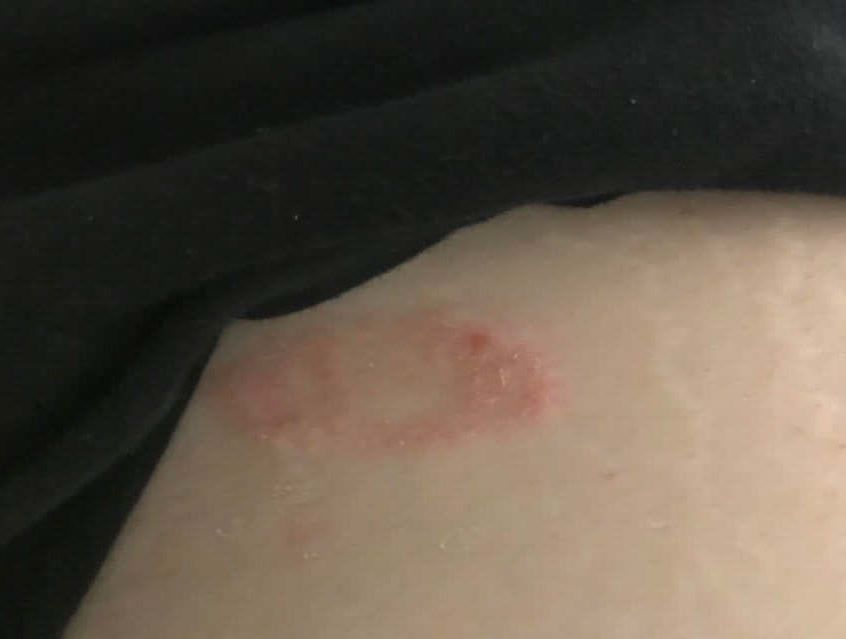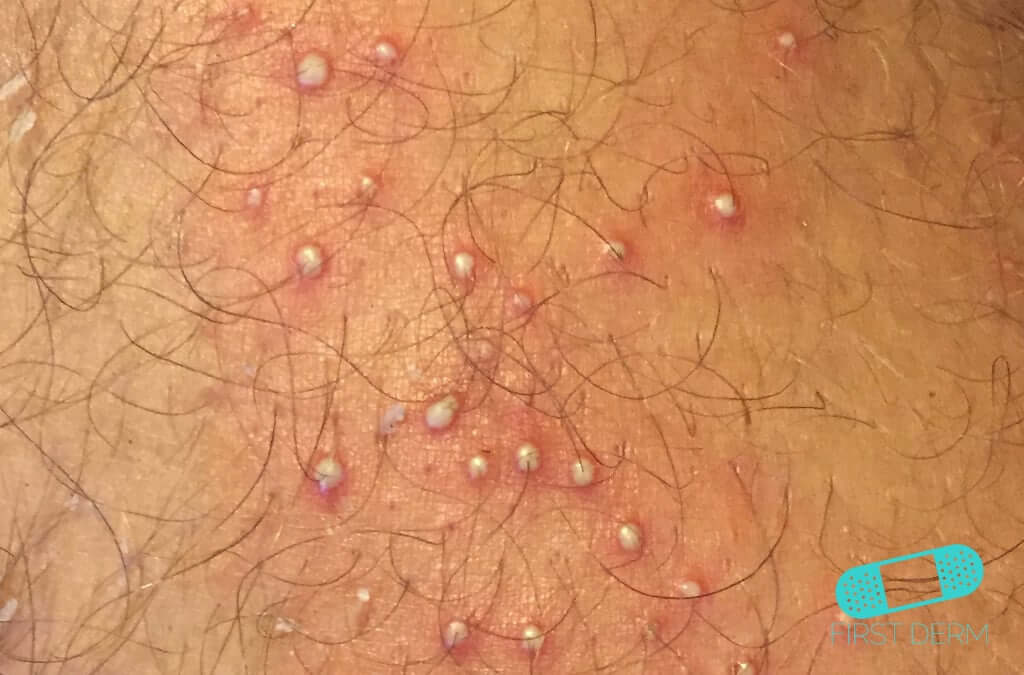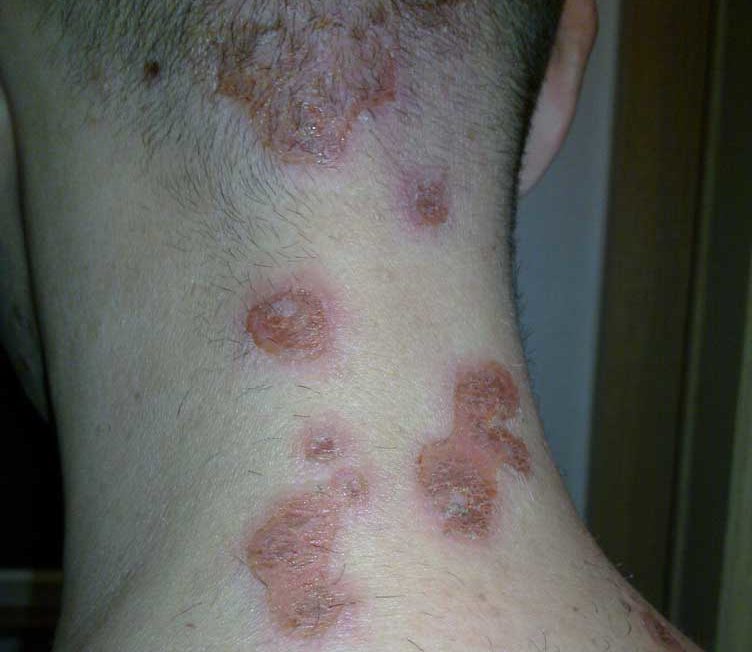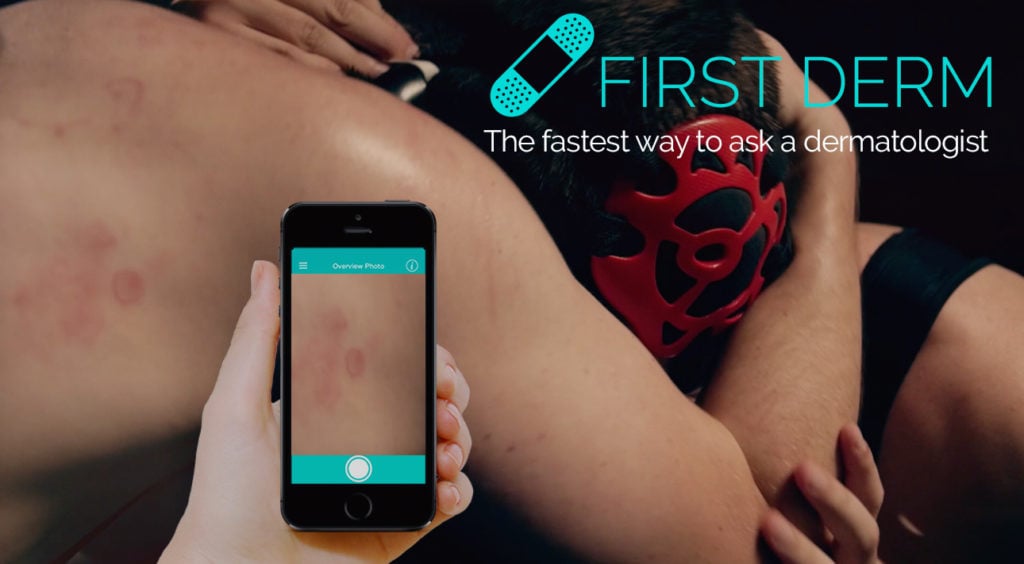Wrestling Rashes – the most common and how to treat them
Wrestling Rashes that are treatable are keeping athletes off the mat
Imagine you’re eighteen years old. You’re a student-athlete, a wrestler at your dream university, working a nearly inhuman number of hours each week to excel at both academics and the sport you love. And all of a sudden, on the day of the championship meet, you’re disqualified for a completely treatable skin issue.
This exact scenario has played out with surprising frequency in recent years. In addition to general medical evaluations prior to enrollment, NCAA guidelines for most sports also recommend game-day examinations for all participating athletes. Usually, an experienced dermatologist is present to screen for potentially transmissible skin infections, and rashes – even the most minor of symptoms can be grounds for disqualification.
Try our FREE dermatology search engine and get peace of mind within a second
Wrestler rashes are preventable and can be treated with prescription free medication
Good hygiene is key! It is easier to prevent a skin infection than treating one. Have clean towels, do not share towels, in the locker room wear flipp flops and also keep the skin clean and dry. If you do get a skin rash, the key is to know what it is quickly, so that treatment can get started straight away. In most cases OTC can be enough to cure the skin disease and time is of essence.
Common wrestler rashes
Ringworm (Tinea corporis)

Ringworm in the Groin Area: Image depicting the common symptoms of ringworm infection, showing a circular, red rash with raised, scaly edges on the skin
Is a fungal infection that can be contracted almost anywhere on the body. It is called “athlete’s foot” when contracted on the feet and “jock itch” when in the groin area, It is the most common type of skin infection and appears on the skin as a raised circle or ring. It is typically red or brown around the edges with scaly, peeling skin throughout. Ringworm thrives in moist and warm areas and can be contracted from many sources such as: clothing, showers, mats, wet floors (shower) and skin-to-skin contact with another infected individual. Ringworm can also be found on some animals and contracted from them.
Try our FREE dermatology search engine and get peace of mind within a second
Impetigo
![Wrestler rash: Impetigo (School Sores) (09) skin [CD-10 L01.00]](https://firstderm.com/wp-content/uploads/Impetigo-School-Sores-09-skin-CD-10-L01.00-1024x675.jpg)
Image of a reddish sore that has broken open, revealing a yellowish-brown crust, characteristic of Impetigo, also known as School Sores.
Is a bacterial infection that can be found nearly anywhere on the body, that is caused by the bacteria Streptococcus (strep) or staphylococcus (staph). Impetigo is usually caused by a break in the skin that allows the bacteria to enter the body, usually a small cut or animal/insect bite, or an open sore. However, a break in the skin is not always needed to contract an infection.
Herpes Simplex

Cold Sore Herpes Simplex on Lips – Image depicting a rash at the edge/corner of the lips, with small, fluid-filled blisters, redness, and swelling, characteristic of a cold sore outbreak caused by herpes simplex virus.
Is a simplex virus, it is a viral infection that is classified into two separate categories: Type I and II. Type I is the kind that is associated with the sport of wrestling, which is in the same category as cold sores and fever blisters. Type II is associated with genital herpes, and is virtually non-existent in wrestling. Both types of herpes can infect nearly any part of the body and are highly contagious. Once you get herpes it cannot be eliminated from the body, but it can be treated with OTC viral creams. Break outs are usually caused by stress, sun or a factor that alters the immune system. It lays dormant, when there is no breakout.
Try our FREE dermatology search engine and get peace of mind within a second
Folliculitis (infected hair)

Folliculitis (Barber’s Itch): A Close-up View of a Cluster of Small Bumps with Reddish Base and White-tipped Heads on the Thigh
Is an infected hair. It is usually not contracted by skin to skin contact, but it is important to rule out that it is not one of the above infections. The most common areas of folliculitis are places on the body that get rubbed by clothing, like the legs or groin. The face and scalp are also common areas, because of irritation caused by shaving, sweating, oils, or makeup. Folliculitis looks like small red or white pimples. However, the difference between folliculitis and regular pimples is that there is a hair in the middle of each “pimple.” The small bumps may itch, burn, or ooze pus. When they burst, pus or blood can come out. Severe folliculitis can cause deep, painful boils or scarring. Permanent hair loss can result if the infection destroys the hair follicle.
Try our FREE dermatology search engine and get peace of mind within a second
Staph/MRSA

Staph/MRSA Infection: Recognizing Symptoms on Neck and Back of Scalp – Image showing telltale signs including painful red bumps, pus-filled blisters, and possible areas of cellulitis, indicative of a serious bacterial infection.
Staph (Staphylococcus aureus) is a group of bacteria that can cause several different infections, including impetigo. This bacterium has become resistent to many forms of antibiotics and is very difficult to treat as it has built up defenses to get eliminated by drugs. Staph usually enters the body through open wounds and hair follicles, but can sometimes cause infection without a break in the skin. In severe cases, the infection may find its way into the bloodstream, causing other infections and health complications within the body. Staph is almost always transmitted by skin-to-skin contact. However, unclean facilities and equipment are also known causes for an infection.
Try our FREE dermatology search engine and get peace of mind within a second
Rules of engagement
Following heightened concern about MRSA (methicillin-resistant Staphylococcus aureus, a potentially very dangerous staph infection) and other antibiotic-resistant skin infections, these examinations have become stricter and resulted in an increased number of student-athletes being disqualified on game day. According to the NCAA, skin infections also account for “at least 17 percent of the practice time-loss injuries in wrestling,” – other contact sports, such as football, have demonstrated similar numbers.
Obviously, these examinations are critical for preventing the spread of infection. What can make this such a frustrating issue for the athletes, though, is that most of the disqualifying issues can be treated fairly easily. If diagnosed weeks or even days prior to competition, any risk of transmission can usually be made negligible.
Take, for example, folliculitis. This is a bacterial, fungal, or viral infection of the hair follicles, usually caused when the follicle is damaged by friction from clothing, insect bites, shaving, or some other irritation. NCAA regulations require disqualification if an athlete is suspected to have folliculitis and has presented any new lesions within 48 hours of a meet or tournament, and unlike other skin issues, lesions cannot be covered with a bandage to allow for participation.
Relatively minor infections like these can, in most cases, be treated with topical creams or ointments. But because athletes aren’t usually required to undergo formal screening until the day of competition, they are regularly faced with completely preventable disqualification.
Try our FREE dermatology search engine and get peace of mind within a second
There are a number of ways that this kind of recurring problem can be avoided. First and foremost, team medical staff at the high school and collegiate levels can implement more frequent screening procedures throughout the season. The benefits of this are twofold: first, athletes would receive treatment for skin infections earlier, making it more likely that they would be able to participate in competitions, and second, it would dramatically reduce the transmission of potentially dangerous infections in practice settings.
But because not all programs can afford to keep an experienced dermatologist on their staff at all times, they may choose to leverage teledermatology technologies when they come across any questionable symptoms or rashes. Using an app such as First Derm, medical staff could simply send a photo of a suspected infection or rash to a licensed dermatologist, who would then offer advice on whether or not further attention is warranted. The athlete can then begin appropriate treatments right away, increasing the likelihood that they will be cleared to wrestle.
In short, with today’s technology, there’s no reason why student-athletes should be so routinely prevented from participating in the sports to which they dedicate so much of their time and energy. They put in the hard work, and it’s the responsibility of coaches, parents, and athletic departments to make sure that they’re healthy enough to play come game day.
Try our FREE dermatology search engine and get peace of mind within a second
Updated on January 03, 2024
References
- Minnesota Department of Health. Skin Infections in Athletes. https://www.health.state.mn.us/diseases/athlete/index.html
- American Academy of Orthopaedic Surgeons. Skin Infections in Athletes. https://orthoinfo.aaos.org/en/diseases–conditions/skin-infections-in-athletes/.
- American Academy of Dermatology Association. Preventing Athletic Skin Infections. Accessed January 2, 2024. https://www.aad.org/public/everyday-care/skin-care-secrets/routine/preventing-athletic-skin-infections.
- Centers for Disease Control and Prevention. Advice for Athletes on MRSA. Accessed January 2, 2024. https://www.cdc.gov/mrsa/community/team-hc-providers/advice-for-athletes.html.
- Zinder SM, Basler RS, Foley J, Scarlata C, Vasily DB. National athletic trainers’ association position statement: skin diseases. J Athl Train. 2010;45(4):411-428. doi:10.4085/1062-6050-45.4.411
Ask a Dermatologist
Anonymous, fast and secure!

The Specialist doctor from the University Hospital in Gothenburg, alumnus UC Berkeley. My doctoral dissertation is about Digital Health and I have published 5 scientific articles in teledermatology and artificial intelligence and others.



